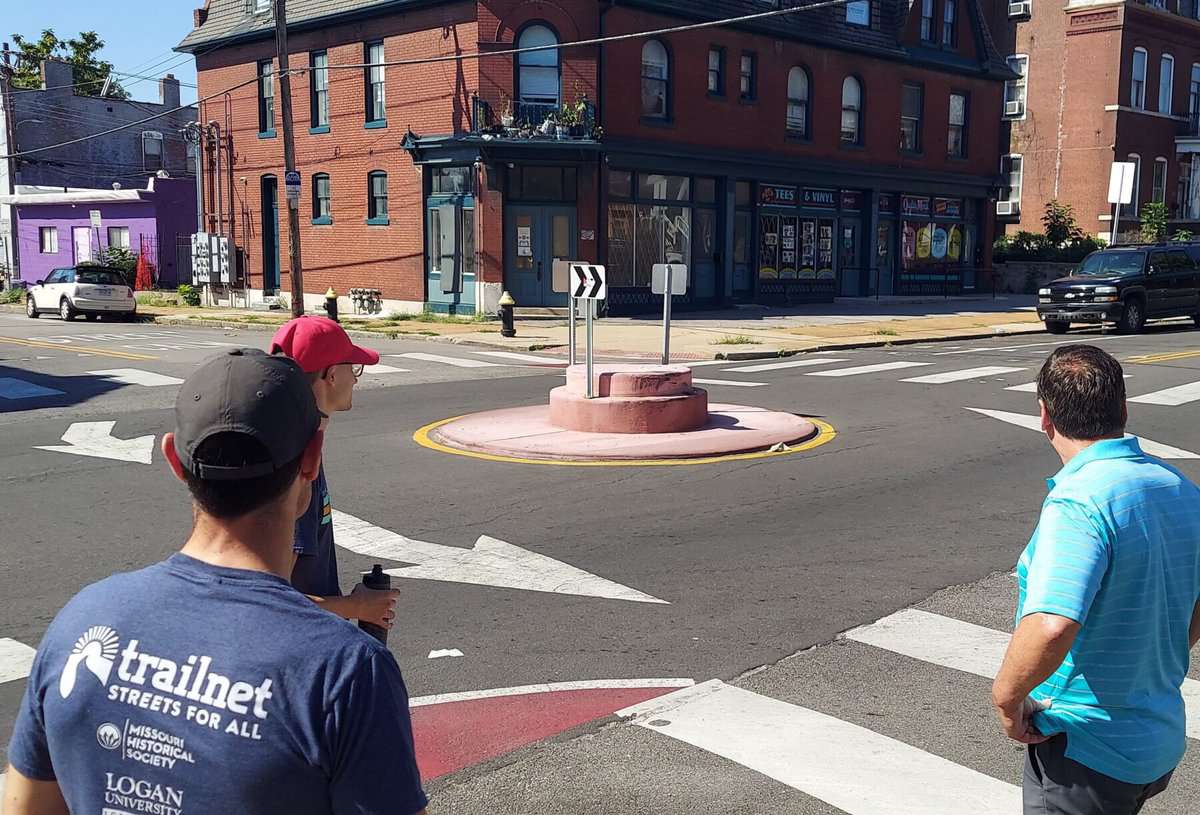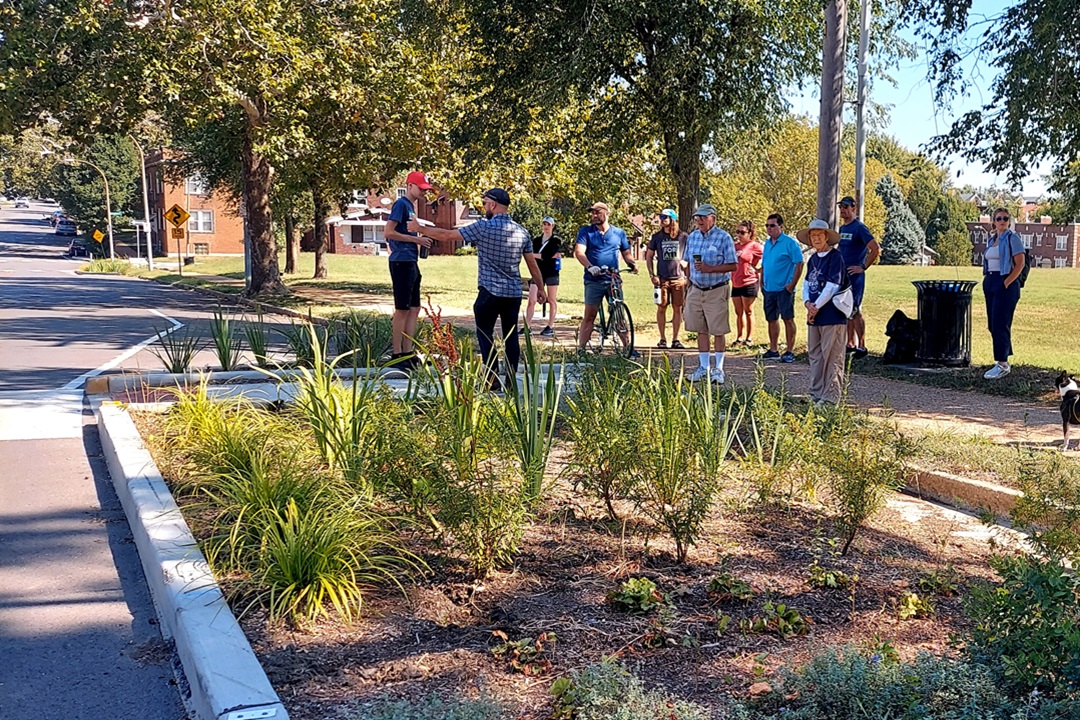The first question asked and answered during Trailnet’s walking tour of the newly completed Louisiana Calm Street Project was, “What is a calm street?”
“A calm street is basically a change in a street’s design to slow down traffic,” said Byrce Monser, community planning manager for the nonprofit. “This can include the use of elements like speed humps, curb bump outs, rain gardens, traffic circles, and pavement markings.”
I and a dozen planners, engineers, elected officials, and neighborhood residents met in September to walk St. Louis’ first calm street on Louisiana Avenue from Meramec to Gravois. Over coffee, we heard about the history of the project. (Short version: It’s been in development for nearly a decade and involved a pop-up demo, EPA grant, open houses, site visits, strategic work plans, budgets, proposals, approvals, etc.) Then, we took a 1-mile stroll.
The difference to the street was easily seen but not jarring. Mostly, I noticed the addition of color from the native-plant gardens and pavement markings. These act as visual cues for drivers to slow down and, in the case of the former, add beauty and help reduce street flooding.
We watched as vehicles reduced speed to navigate the narrower lanes and the traffic circle at Chippewa. The benefits of the latter are many: According to the Institute for Highway Safety, traffic circles are a safer alternative to signals and stop signs, improve traffic flow, reduce vehicle fuel use and emissions, and generally are safer for pedestrians.

Traffic circle at Chippewa and Louisiana.
“People hate speeders in their neighborhood,” commented Scott Ogilvie, Complete Streets Program Manager for the City of St. Louis. “Everybody is happier when cars are moving more slowly.” This is especially important in an area spanning multiple neighborhoods (Benton Park West, Gravois Park, and Dutchtown) and with numerous parks, schools, churches, and community centers.
And that’s why we’re talking about traffic in an outdoor recreation magazine. The comfort and accessibility that calm streets provide can increase walking, running, and biking, which in turn is good for our health, good for the environment, and good for the economy.
The second phase of the Louisiana Calm Streets project will extend south to Carondelet Park and is already funded, with other bike/pedestrian-friendly roadway improvements planned for Tucker Boulevard, 20th Street, South Broadway, and more. Not to mention major projects like the Tower Grove Connector and Brickline Greenway.
“It’s an exciting time,” said Ogilvie. “Every year for the next several years, things will be coming online.”
Author: Brad Kovach is the editor/publisher of Terrain Magazine.


Leave A Comment